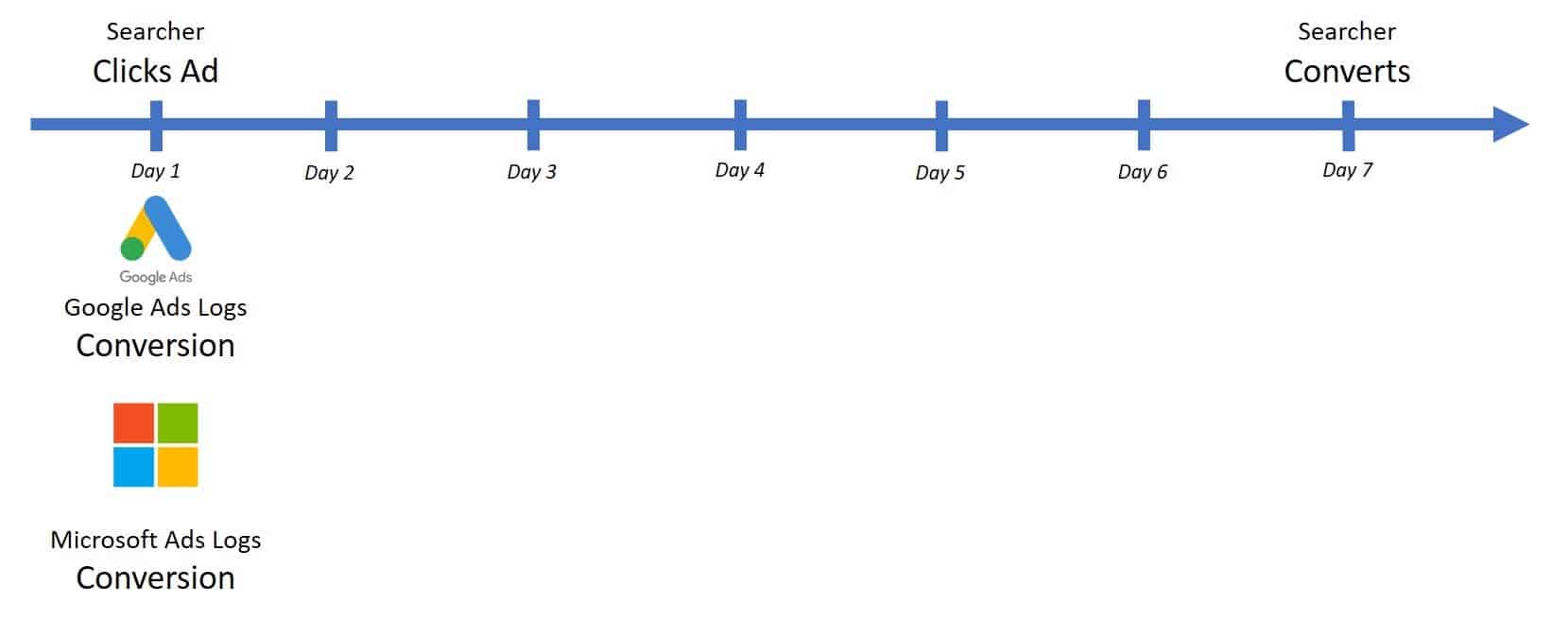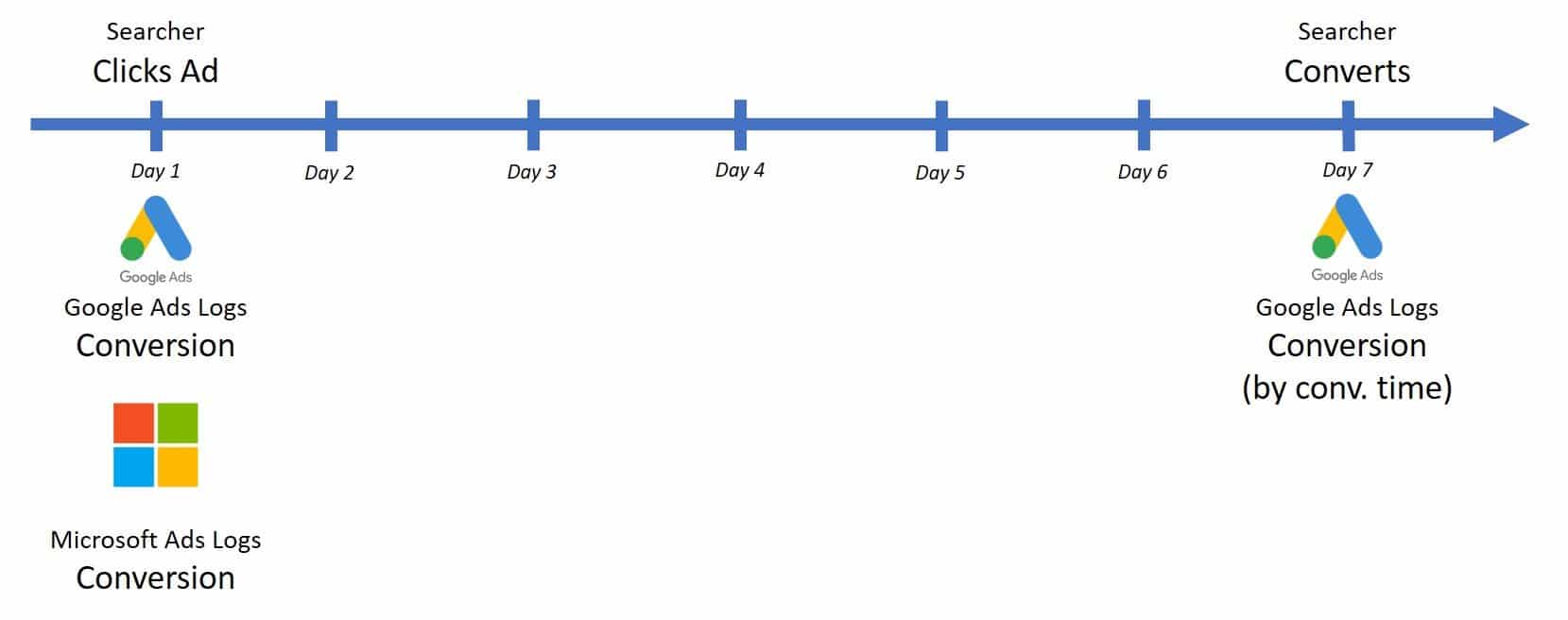Conversion data in Google’s and Microsoft’s ad platforms has long frustrated digital marketers trying to report on their campaigns’ performance. Both log paid search conversions back to the day the ad was clicked, not the day the order was placed. However, Google Ads recently released new reporting columns that make performance tracking more complete.
To understand the change, let’s start with an example. Say a searcher clicked on your ad seven days ago, came to the site and didn’t purchase. Then they come back to the site today to make a purchase. Google and Microsoft would both log the conversion to the date the ad was clicked seven days ago, as shown below.

Google has used this model for more than 10 years, while Microsoft switched to this model in October of 2018. The purpose is to attribute the conversion to the original action – the ad click.
This attribution system works great if you have a short lag from click to conversion. But what happens if you have a large lag from the time of the ad click to the time of the conversion? What if your average time to conversion is 28 days after ad click, or longer, as it is with some clients? With a 90-day cookie, conversions will continue to track back to the original ad click. That means you wait 90 days to see how your ads are working.
We want to see the data both ways: conversions tied to the day of the first click, and also tied to the day of purchase. Now we can have it … on Google Ads, anyway.
To complement the existing conversion metrics, Google Ads recently added six new conversion columns:
- “Conversions (by conv. time)”
- “Conv. value (by conv. time)”
- “Value / Conv. (by conv. time)”
- “All conv. (by conv. time)” and
- “All conv. value (by conv. time)”
- “Value / all conv. (by conv. time)”
In the new “by conv. time” columns, Google Ads reports conversion data on the day the conversion actually happens rather than attributing it to the first or multiple touch points. As a result, the “by conv. time” columns will consistently show larger numbers than the typical conversion columns.
Let’s look at the previous example again, with the new data added in. The searcher clicked on your ad seven days ago, came to the site and didn’t purchase. Then they come back to the site today to make a purchase, as shown below.

Google and Microsoft would both still log the conversion to the date the ad was clicked, seven days ago. But now, Google Ads will also log the attribute the conversion to today using the new “by conv. time” columns.
Google states the purpose of the new columns best: “… compare your metrics in Google Ads with your business’s sales reports to confirm how many products you sold last month.” To read more on the differences in reporting between the two, see: “Google Analytics versus Google Ads Conversion Tracking.”
Think of these new columns as another data point you have to reference. The new conversion columns should not replace the way you optimize in any way. If you did, you would be attributing the wrong days and keywords as well as discrediting the users’ journeys to conversion. But the new columns do help give you another glimpse into how your campaigns are working.



